Research (2nd – 8th October):
The game is set in an abandoned factory, and so the first task before blocking out anything was to research and find inspiration.

My initial sketch of level 1 completed during pre-production included just a gatehouse – which is used to carry out ID checks on people and vehicles.
However, after researching the outside of factories and their layouts, I realised that the level could be expanded much further.
Improved Layout (2nd – 8th October):
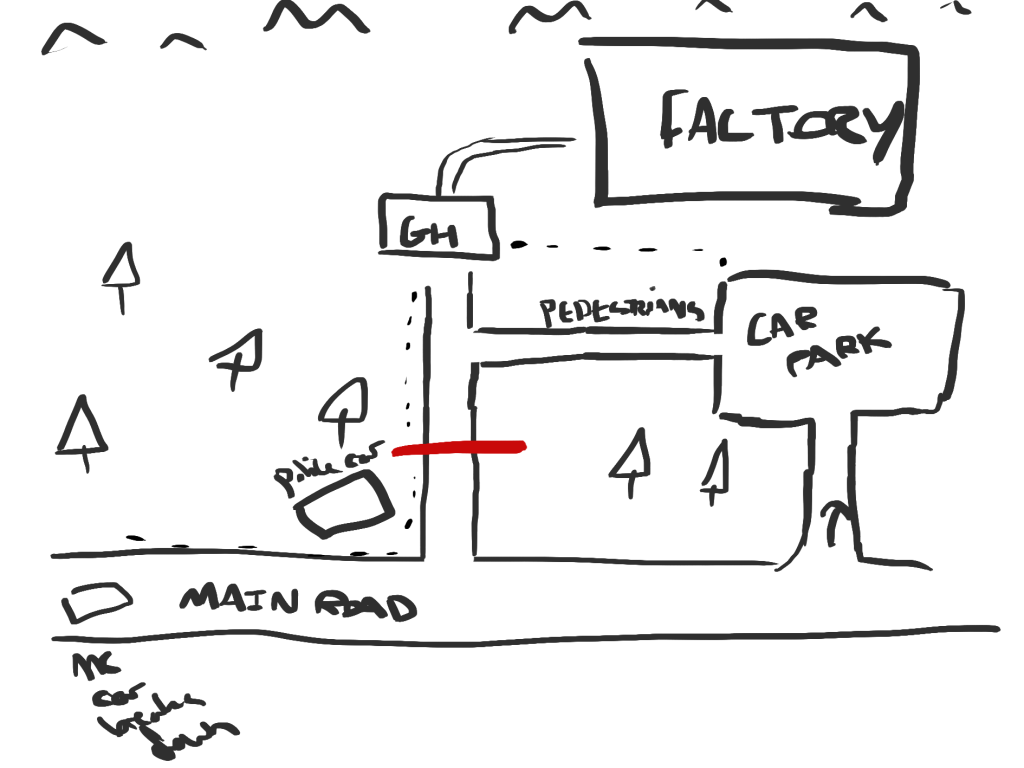
As a team, we agreed that the game would open with a cutscene of the detective driving his car when suddenly he breaks down outside of the factory.
Environmental storytelling within level design is the act of arranging objects within the world in a way that communicates a story to the player (Stewart, 2015). In this instance, I aimed to include an ancient abandoned police car that had crashed through a fence right at the start of the level.
The goal was to hint that a member of the law had explored this factory previously and not returned.
Just past that, a large object will be blocking a path, forcing the player to go a certain way. To avoid player frustration, the blocked path should be obvious to see from a long distance. This way, the player will avoid going down the path entirely and take the correct route first time.
Once the player passes through the carpark, they will reach the gatehouse which will teach them the CCTV mechanic. After completing the gatehouse puzzle, they will walk towards the factory and enter level 2.
A quick top-down sketch of the level acts as a guide when blocking out (World of Level Design, 2016). The final level most likely will not follow this layout due to the process of testing and iteration throughout the creation the the game, however it is a useful starting point.
Initial Blockout (9th – 15th October):
Metrics:
Metrics are the sense of scale / measurements across a game (TheLevelDesignBook, 2022).
The most important part of a level is the scale of it. Without a consistent and sensible scale, the player will sense that something is wrong – even if they are unable to specifically identify it (TheLevelDesignBook, 2022).

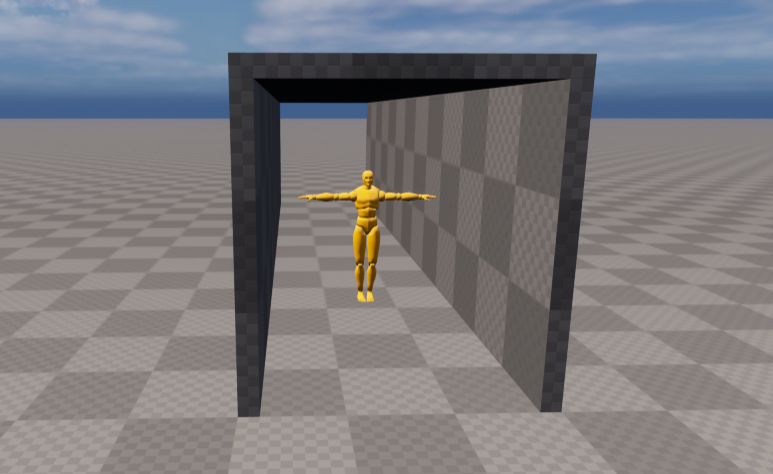
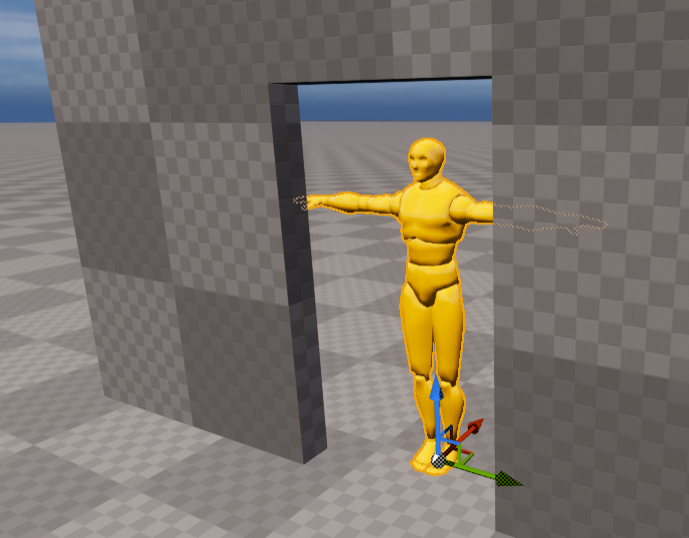
Therefore, before blocking out my level I imported a human-sized (6ft) mannequin to ascertain the metrics for key aspects of the game, such as hallways and doors. I also looked up the standard measurements in the real world for each of these, which helped create a realistic scale.
However, whilst the scale may be true to the real world, they might not feel correct inside of the game. Consequently, it is imperative to test the game constantly to make sure the scale looks and feels right whilst in first-person.
Blocking Out The Gatehouse:
I decided to blockout the gatehouse first as it is where the CCTV function is introduced to the player. Since this mechanic is the key aspect of the game, it needed to be tested immediately to determine if it is viable or not.
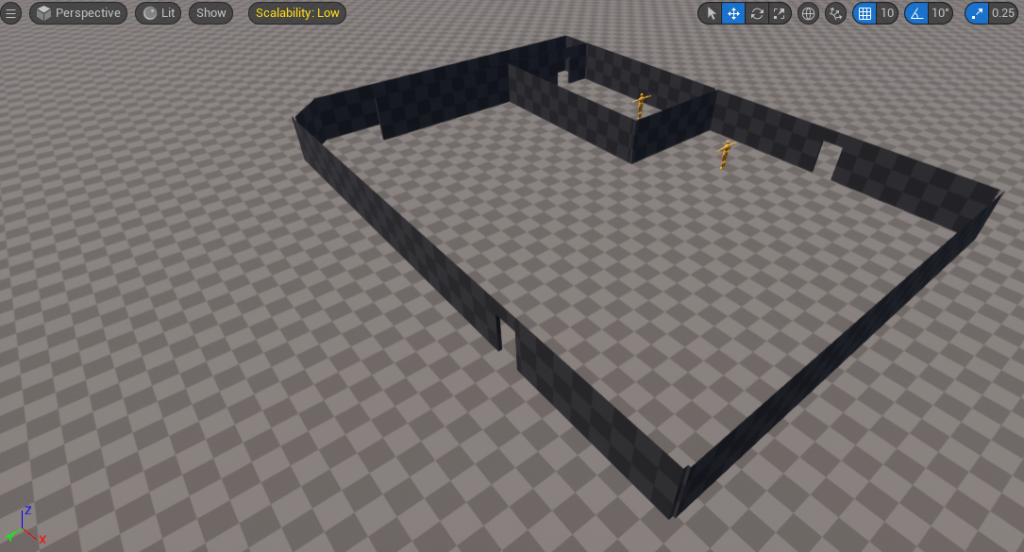

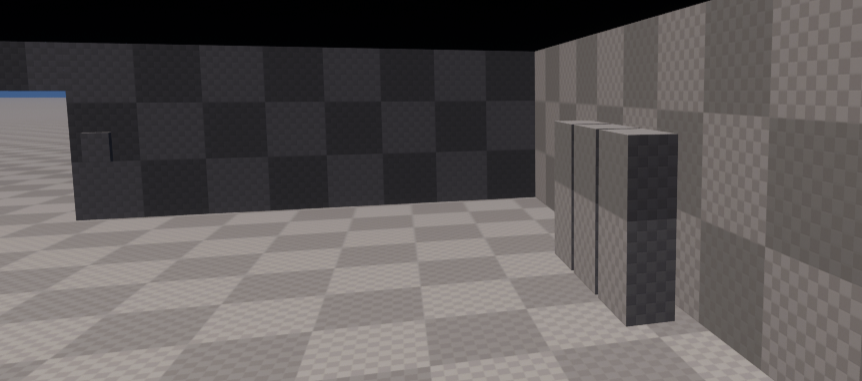
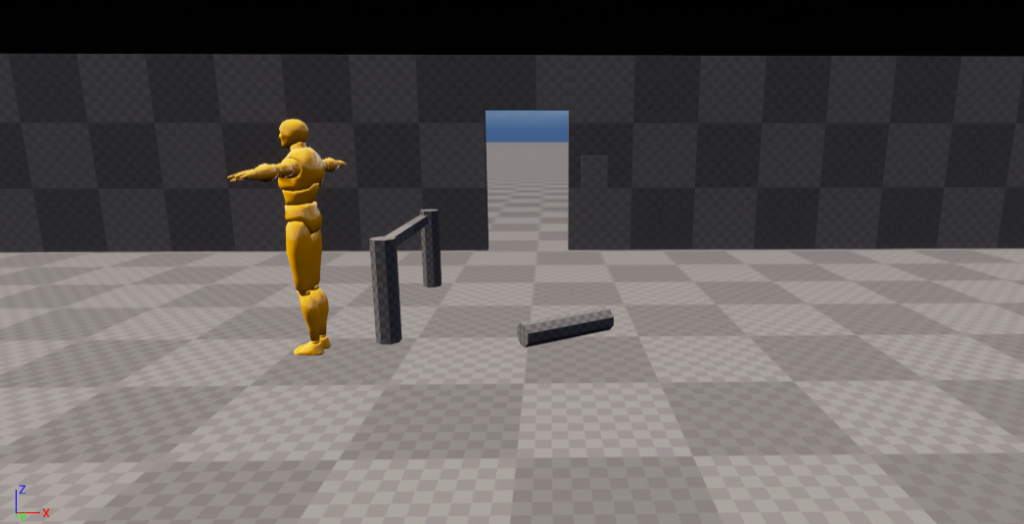
Since the metrics for walls and doorways had been deduced, blocking out the gatehouse was a relatively quick and smooth process.
For more obscure objects in the level however, such as chairs, lockers and stanchions, I had to go through the process of looking up real-life measurements and playtesting in Unreal to find the correct metrics.
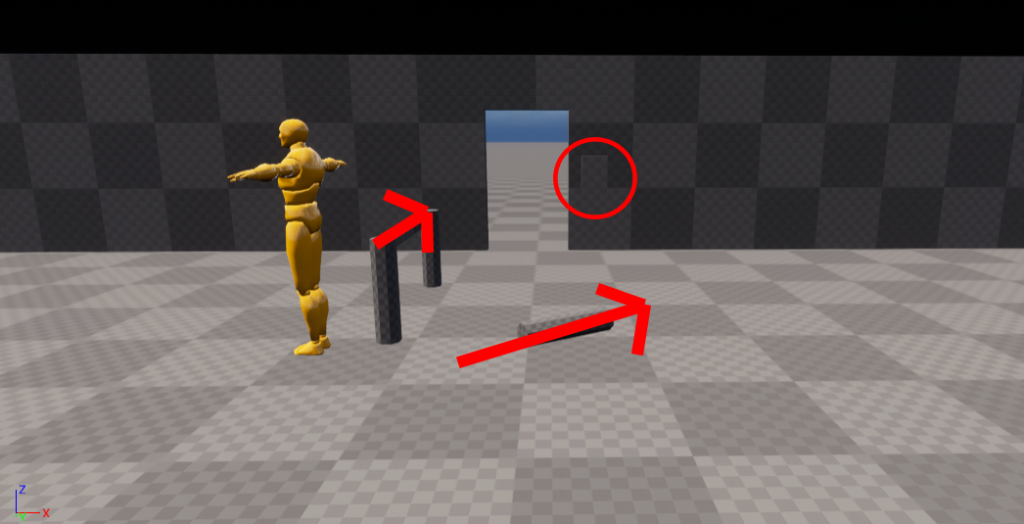
Leading lines is a technique used in photo composition where “lines” in the environment draw the eye to a specific point of interest (Shaver, 2018). However, this can be translated to level design within video games too.
In my level, the stanchions are leading the player towards a keypad on the exit door. This subtle technique can be used cleverly within an environment to guide the player through the level.
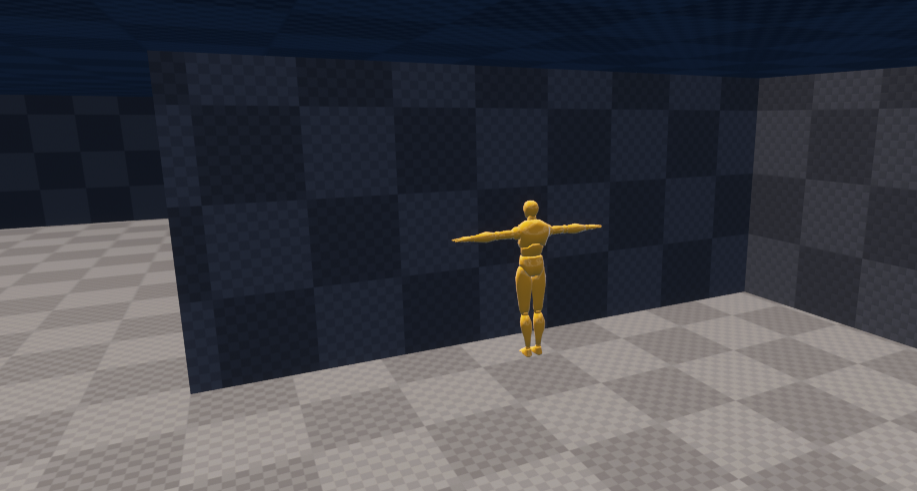
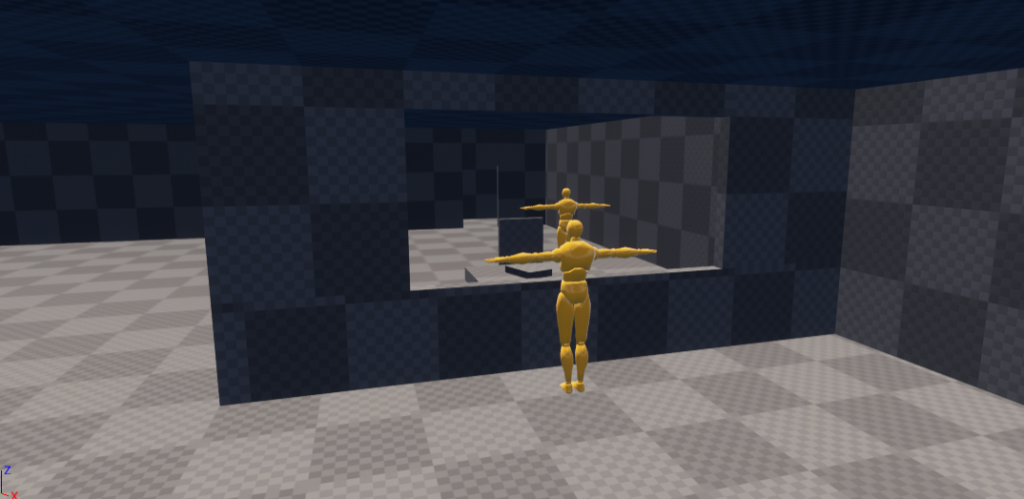
To further guide the player, I also added a window where the CCTV tablet can be seen by the player. By adding a sparkling VFX to interactable objects, like the tablet, this may help gain the player’s attention and direct them on what to pick up.
Adding Colour (16th – 22nd October):
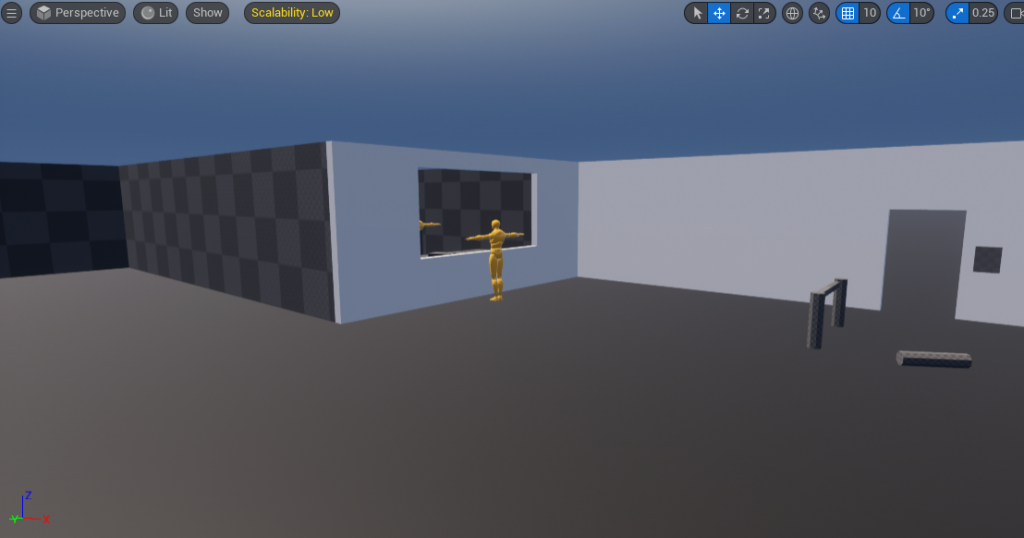
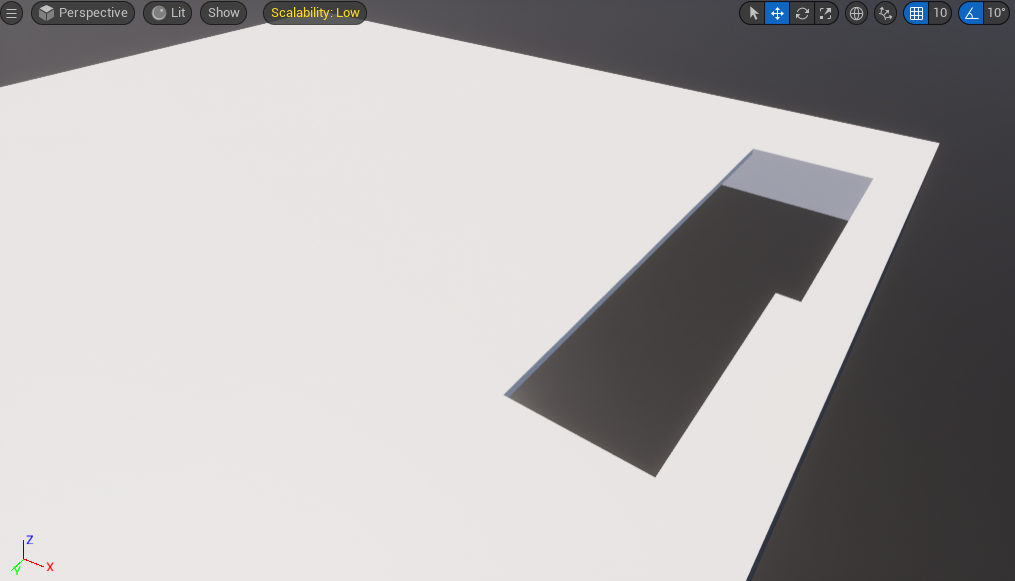
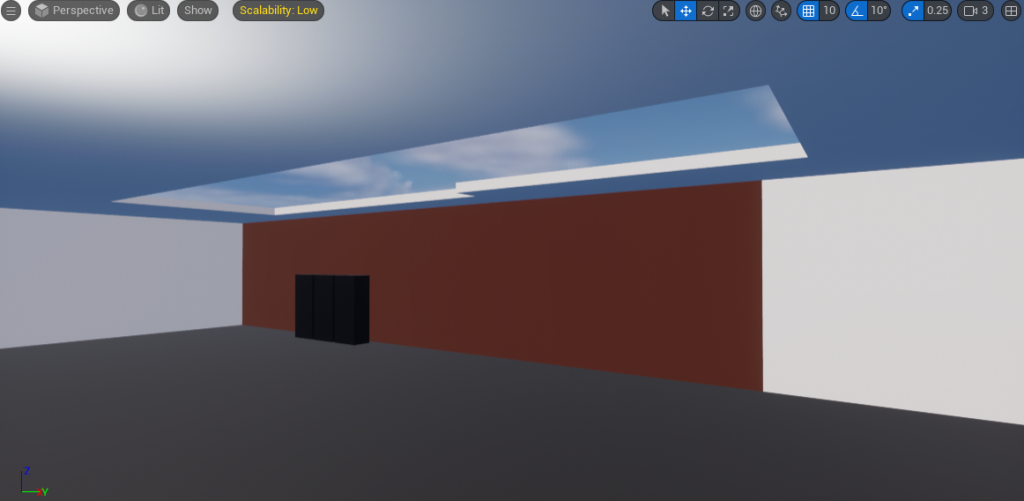
Colour, within a blockout, provides context (Shaver, 2018). As I am working in a team, my teammates must be able to decipher what the rough 3D shapes represent so that they can also work on the level.
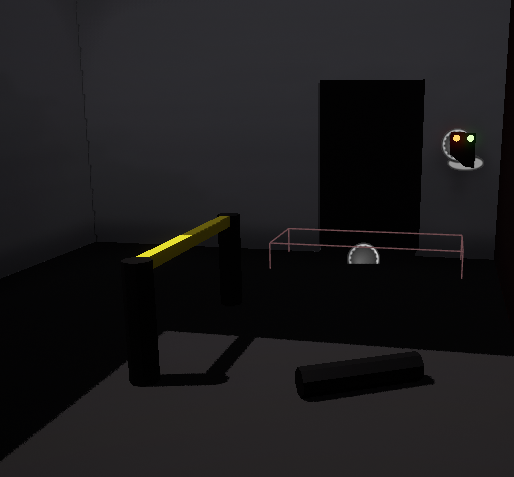
Furthermore, colours communicate affordance and can guide the player on where to go (Shaver, 2018). By using contrasting colours, the player will naturally be drawn towards them – such as the yellow on the stanchions.
However, the colours must fit in with the environment and not stick out too much as the player may notice and feel as if they are being assisted throughout the level. Whilst good level design does hold the hand of the player in guiding them where to go, they mustn’t discover that this is occurring.
Sending The Level (23rd – 29th October):

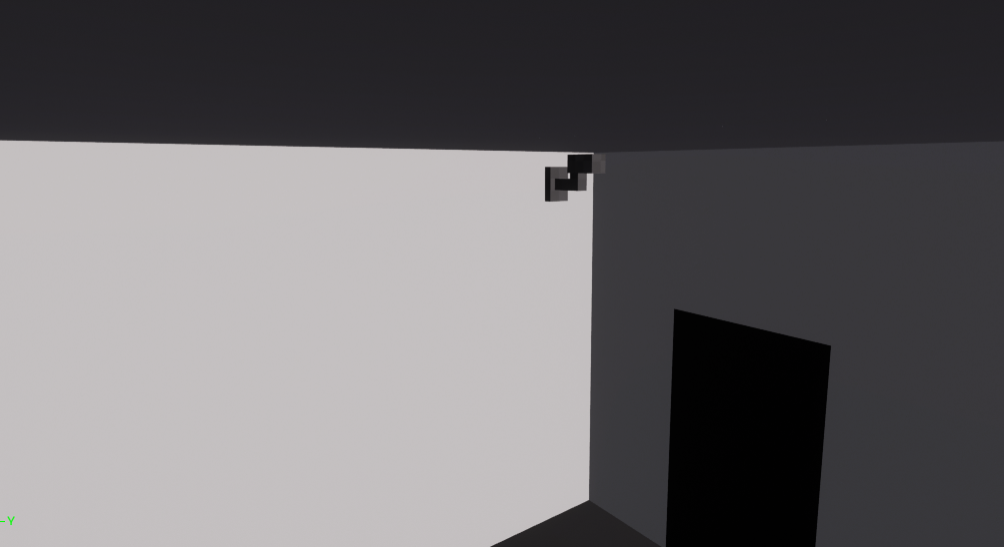
Before sending the level to Lennox, I made sure to create a simple model of security cameras and place them around the gatehouse interior. This was done in order to communicate with him where the cameras should be placed for the second-person CCTV view.

So far whilst creating this project I had been using Unreal Engine 5.1.0, however, to make transferring projects easier we all agreed to use the same version of Unreal – 5.2.1.
Converting the project was relatively simple as the versions are extremally similar, unlike for the past game (Marine Majesty) in which I had to convert an Unreal Engine 4 project to Unreal Engine 5.
Once it had been converted, I zipped up the file and sent it to Lennox so he could implement and test the CCTV mechanic he had been working on.
Using something like Github would have been simpler and less time-consuming as when one person makes a change to their project it is updated for everyone. However, we found setting it up with Unreal Engine much more complicated than it is for Unity and so decided to send zip files to each other.
This required more planning and communication as we needed to know what a team member was going to work on before zipping it up and sending it to the person with the main project to implement.
Conclusion:
I decided to take a break from working on this level once the gatehouse had been blocked out to focus on my many other tasks such as character concept art and 3D modelling. Overall, production was going smoothly at this stage and each member had a clear vision of what jobs they had to accomplish.
References:
- Shaver, D. (2018) Invisible Intuition : Blockmesh and Lighting Tips to Guide Players. Available online: http://davidshaver.net/DShaver_Invisible_Intuition_DirectorsCut.pdf [Accessed 17/03/2024].
- Stewart, B. (2015) Environmental Storytelling [Blog post]. Game Developer. 12 November. Available online: https://www.gamedeveloper.com/design/environmental-storytelling [Accessed 16/03/2024].
- TheLevelDesignBook (2022) Metrics [Blog post]. TheLevelDesignBook. Available online: https://book.leveldesignbook.com/process/blockout/metrics [Accessed 16/03/2024].
- World of Level Design (2016) 3 Workflow Techniques – How to Draw Top-Down Level Design Map Layouts [Blog post]. World of Level Design. 14 January. Available online: https://www.worldofleveldesign.com/categories/csgo-tutorials/csgo-how-to-draw-top-down-layouts.php#:~:text=Top%2Ddown%20layout%20is%20a,drawing%20layouts%20are%20not%20complicated [Accessed 16/03/2024].